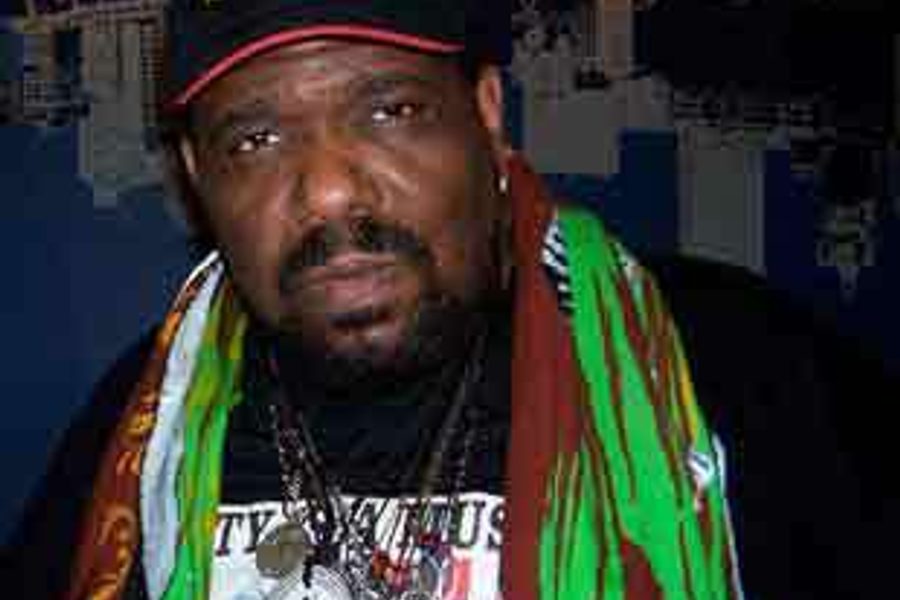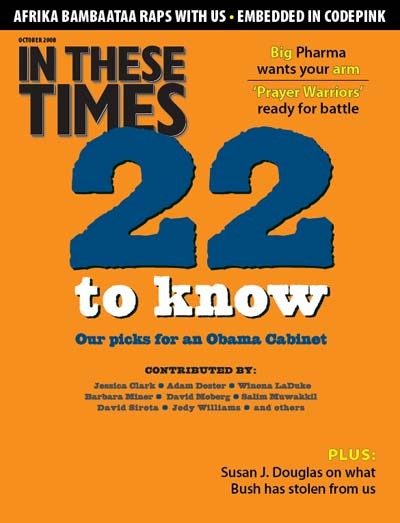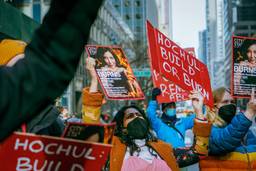
Afrika Bambaataa is legend in the world of hip-hop: an Afro-Futurist in the tradition of musician Sun Ra; a radical democrat and organizer; a sound-system blaster; a South Bronx DJ; a former leader of the street organization The Black Spades; and father of the gang-structured, nonviolent, community-minded Universal Zulu Nation.
Known as the Master of Records – for his broad musical tastes and rare, hard-to-find breaks – Bambaataa challenged and changed the sonic landscape of a de-industrializing South Bronx in the late ’70s.
While midtown Manhattan was sniffing disco, in uptown innovating black DJs with West Indian roots were playing James Brown beats in succession.
Kool Herc, Grandmaster Flash and Bambaataa brought new flavor and familiar funk to the block parties, high school gymnasiums and community centers, before spreading their sound to other boroughs – and soon, the planet.
In 1982, Afrika Bambaataa and his crew, Soul Sonic Force, put out Planet Rock, which, on vinyl, captured the blend of genres Bambaataa was creating in New York. He called it Electro-Funk – a mixture of funk and rock breaks, synthesized melodies, video game explosions, and samples from unconventional sources, such as ’50s commercial jingles and the German electro group, Kraftwerk. The success of Planet Rock sent Bambaataa and his crew around the world, thrust into the role of hip-hop missionaries.
In These Times spoke with Bambaataa, now in his 50s, at the Smart Bar in Chicago. He discussed the origins of Electro-Funk, politics and how Sly and the Family Stone revolutionized music.
The depth of your influences is so rich – where does that come from?
First, I have to give credit to the Supreme Force and then to my mother, who was well-versed in different music. Then I have to give it to myself for diggin’ in the crates and, now, in the electronic type crates via the Internet.
So your mother had a lot of different kinds of music in the house?
A lot of different music: rock to old soul and, of course, you know James Brown always rules. Temptations. Motown. Staxx.
Once I started buying my own records, I got into the style of Sly and the Family Stone. That’s when the whole thing started changing – really, the whole of black music, or the whole of music. There was the music before Sly and then there is music after Sly.
Motown and everybody had to change after Sly. Even the Godfather of Soul [James Brown] had to go into a different direction.
What was it about Sly that made everyone change?
Sly really funked stuff up. It was the first multicultural band, and the energy when they came on stage … they was busting up a lot of groups.
If you look at the whole Woodstock thing, when they came on, the whole place got crazy lit up.
Motown groups started changing to the funk. Sly was a pre-dater to the funk. Sly, James [Brown] and Uncle George Clinton from Parliament Funkadelic, those three were really my main influences.
Planet Rock took hip-hop from regional phenomena to national and international audiences. How did it become your introduction to the planet?
When I first did it, I was making it for the punk rock people and the soul people who liked to funk. I didn’t know it was going to stretch into all different type of nationalities and races.
The record started taking me around the world and breaking down barriers in places that didn’t know nothing about hip-hop. And that was a struggle in itself. In different parts of Europe and Asia, you perform and people would just sit there. So we had to break it down. Go to Italy and grab people. “Get your butt up. Get up on stage, get down, shake it.” Grab the kids, and make it seem fun.
Sometimes when I threw up the funk sign, they thought it meant you were taxing somebody’s mother, so we had to show them, “No, no, this is part of the funk.”
You had to break down the meaning of all that and people eventually starting getting into it.
One of the prominent samples on Planet Rock is from Kraftwerk’s Trans-Europe Express. What did you think when you first heard them?
I was digging in the crates and saw these four guys that looked real strange. They looked bugged out on this cover. I took the record home and I heard that wild sound. I was already into Yellow Magic Orchestra [a Japanese electro-pop band]. Then I heard these guys and I thought this was some other type of shit here. I said, “I am going to try this with my audience.”
I started playing it and people were getting into it. And the more I played it at the different jams, it became a household – a big, gymnasium-hold – party record.
I just started going Kraftwerk-crazy, getting all the old albums before Trans-Europe Express. I mixed that side of the family with the funk side of the family and then came the birth of Electro-Funk.
You said Planet Rock was made, in part, for punk kids. What was that era in the late ’70s- early ’80s-New York like, when downtown met uptown?
I was already playing in rock clubs downtown. And a lot of punk rockers were starting to come uptown. The media was waiting for black and white youths to kill each other, but it was the music that crossed that barrier.
The punk rockers came in and started doing the punk rock dance, and you see black, Puerto Rican kids learning how to do their dance. Some laughed at it first, but then it became [incorporated into] dance in the community. Then [the punk kids] learned how to do the hip-hop stuff – the wop and other dances – and they just started crossing barriers.
We started playing downtown at Negril and The Danceateria and The Jefferson Club. Everyone was just having a good time. And our name started stretching out even further, and all these different people started coming to my party.
Once we got in The Roxy, it was over. Everybody who came to New York City had to stop at The Roxy to see Afrika Bamabaataa and the Zulu Nation.
Your ability, innovation and practice of the mix, is it because you are a product of a post-industrial New York? Is it a trait of African diasporic culture, the ability to take seemingly disparate things and make a whole out of them?
You got to be musically inclined and have a love of music and not get caught up that this person is from that race and that nationality. All that shit is irrelevant. If it’s good, it’s good.
When we grew up, most of us might say we didn’t know nothing about classical [music]. But we loved classical music from watching Bugs Bunny or the Road Runner. During the chase scenes, you hear classical songs. You hear opera in Mighty Mouse.
I’ve heard different types of music from other people in different languages, so I was never scared to play all this music in front of my audience.
As my audience became more international, I’d keep playing things and people would say, ” ‘ell, I don’t like no metal. I don’t like that funk.” And I’d take them on a musical journey and say, “Well, you just danced to some house music, you just danced to some salsa.”
Your social and political thought is as deep as your record crates. How did you create such a complex consciousness?
Seeing so much, witnessing things in my community: the teaching of the Most Honorable Elijah Muhammad. Malcolm X. Minister Farrakhan. The Black Panther Party. Hearing John Lennon, all the instant karma and power of the people. And, of course, the great Sly and the Family Stone. I just started incorporating all of that into my thoughts.
Once we began speaking to different people from around the globe, that played a key role to building the Zulu Nation.
People might tell us how it was in Italy. Or people tell you what was happening back in Africa, where people had the misconception that it was the dark continent, and then you find out that it is the mother and father of all civilizations. Then you learn the true history of the Americas.
You are seeing all this – all the lies people try to hide from each other. That played a big role. When you go to each country and really meet the people and learn what’s really going on.
I wasn’t one of those stars that stayed inside the hotel. I went to people’s homes. And that lady became Mama Zulu of Germany, this one became Mama Zulu of France, one in the West Indies and another one in South America.
Is hip-hop responsible for producing this cultural moment that makes the prospect of electing Barack Obama possible?
Hip-hop played a key role, but you have to look at not just one genre. House, techno, electro – seeing people start accepting other genres, inter-mingling when they are in clubs, some getting into various political organizations.
You’ve still got the closed-minded people, but you have a lot of people who might say they are this or that, and then adapt to something else [when] they talk to people.
It is that time when more people are accepting that we are not alone. But hip-hop has brought more people together than all the politicians put together.





